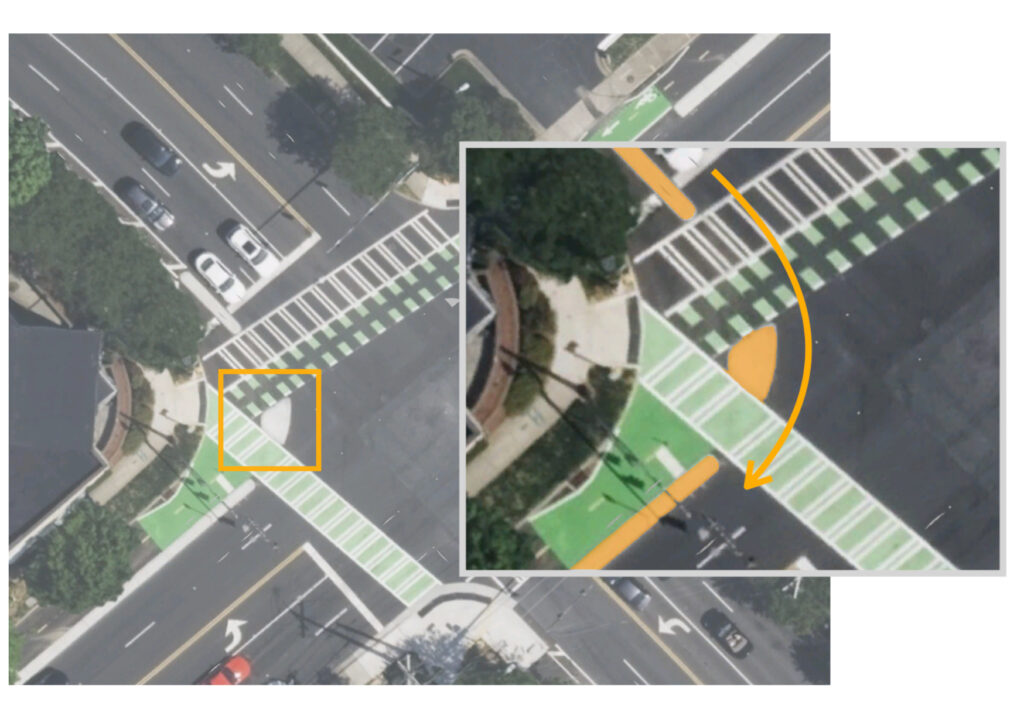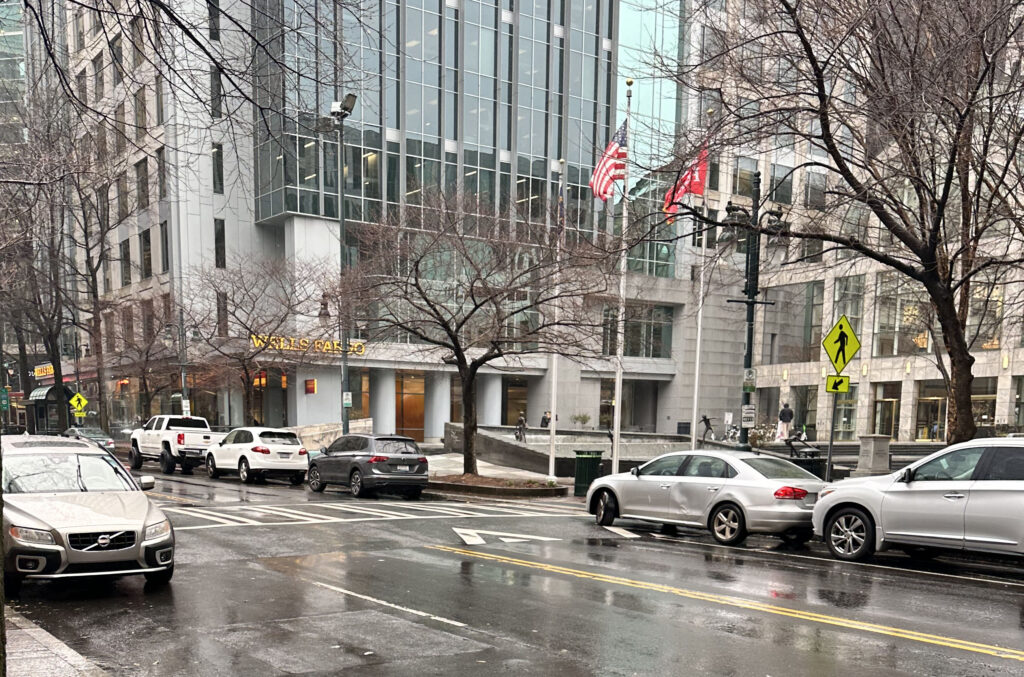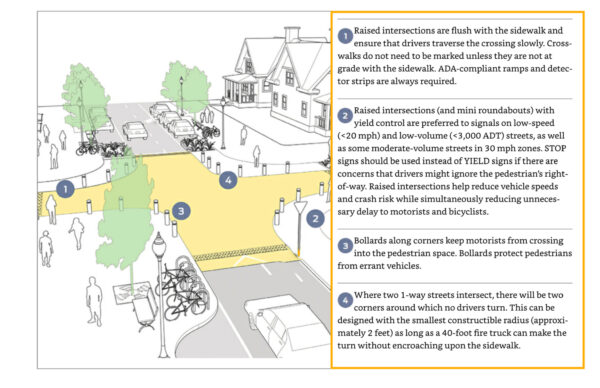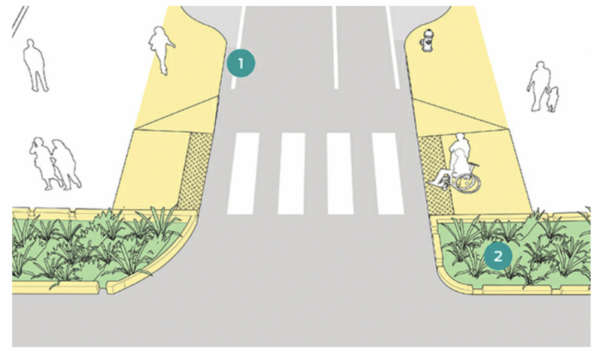Charlotte could implement safer street design. Here’s how
Infrastructure design plays an essential role in keeping people safe on our streets, especially at intersections. As part of Sustain Charlotte’s mission, we are committed to advocating for solutions that will help the city of Charlotte reach its Vision Zero goal of no traffic-related injuries or deaths.
Protected intersections

Credit: Apple Maps with editing by Eric Zaverl)
Create intersections that make it easy for cars to identify and steer clear of space reserved for pedestrians and people riding bikes. Partially protected intersections provide minimal treatments, like corner islands that separate bikes from automobiles, preventing vehicles from infringing on the bikeway while also slowing them down when turning. They can be designed to accommodate large vehicles making turns when needed. At the same time, this feature creates a protected queuing area for people on bikes waiting at the signal.
Here’s an example of a partially protected intersection here in Charlotte. The following image is of the corner of Seventh and McDowell streets. The areas highlighted in orange are concrete corner islands and raised islands that provide pedestrians and people riding bikes space and awareness. Additional elements could also be added to make this intersection safer.
Raised crosswalks and speed humps
Raised crosswalks and speed humps are considered to be vertical speed-control elements. They are needed when the street’s speed limit cannot be accomplished through traditional traffic design elements, like medians, narrow lanes, curb extensions, or enforcement of lower speed limits. Most streets with speed limits of 30 mph and under are good contenders for this type of safety element.

Credit: Eric Zaverl
Raised intersections
Raised intersections help create safer, slower car-speed crossings while extending public space for people walking and riding bikes at non-major intersections. Broadly, they reinforce slow speeds and encourage drivers to yield to pedestrians at the crosswalk.

Credit: National Association of City Transportation Officials’ Urban Street Design Guide
Curb extensions
Curb extensions physically narrow the drive lanes, creating a safer and shorter pedestrian crossing while expanding the space for vertical elements like street benches, plantings, and trees. When these items are added, they make these crossings even safer. They can and should be implemented on most of our streets.

1: A curb extension should generally be I-2 feet narrower than the parking lane, except where the parking; 2: Combine stormwater management features, such as bioswales or rain gardens, with curb extensions to absorb rainwater and reduce the impervious surface area of a street. (Credit: National Association of City Transportation Officials. Urban Street Design Guide)
Reduce, redesign, and simplify
Other safety elements could include reducing excess asphalt at intersections dedicated to cars by transforming them into public plazas. This could mean shrinking vehicular travel lanes from 12 feet or more to 10 feet in width.
Complicated intersections could be redesigned to restrict vehicle turns at odd non-right-angled corners, streamlining pedestrian crossings and allocating space for safer bicycle crossing.
Finally, we could simplify road design to reduce the number of driveways to properties with multiple entry points by retrofitting them with cross-access throughout the block.
We must design better
Pedestrians and cyclists account for less than 3% of Charlotte’s street users, but account for almost 30% of traffic fatalities. We are encouraged by Vision Zero’s holistic approach to identifying and implementing solutions, but we must increase the rate of investment in infrastructure and enforcement to stem the rising tide of serious traffic injuries and fatalities. Safer street design to encourage safer behavior is a great place to start.
Thanks for reading!
As a nonprofit, community support is essential for us to keep doing what we do — including providing free articles like this. If you found this article helpful, please consider supporting Sustain Charlotte so we can continue advocating for a better future and working with residents, neighborhood organizations, government agencies, nonprofits, and businesses to solve the most critical challenges to Charlotte’s long-term social, economic, and environmental health.
Want to stay in the loop? Subscribe to our free, weekly newsletter and follow us on Twitter, Facebook, and Instagram.
